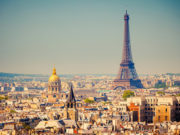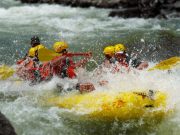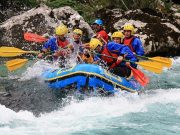The French warmly call their darling country "l'Hexagone" as a result of its particular six-sided shape. This lovely and assorted land is circumscribed by the English Channel, the Atlantic Ocean, the Mediterranean Sea, Italy toward the south, Switzerland and Germany toward the eastand Belgium to the north. From the seaside to the mountains, each region of Francehas its own unique character: the awe-inspiring French Alps, sun-drenched rural Provence, the glamorous French Riviera, the scenic coastal province of Brittany, and charming Alsacewith picture-perfect hamlets nestled in vine-covered hills.
For those planning a vacation, the challenge is deciding where to go. Paris is the most obvious must-see destination, and Versailles is an obligatory day trip from Paris. Other classic French vacation itineraries include visits to the beach resorts, castles, medieval churches, and picturesque villages. For more off-the-beaten-path experiences, explore the farmlands of Gascony, hike through forests in the Pyrenees Mountains, join a candlelight spiritual procession in Lourdes, savor the cuisine of Burgundy, or take a gastronomic tour of Lyon. In every corner of France, visitors are awed by the country's refined culture, gorgeous scenery, and exquisite historic monuments.
1 Paris & Versailles
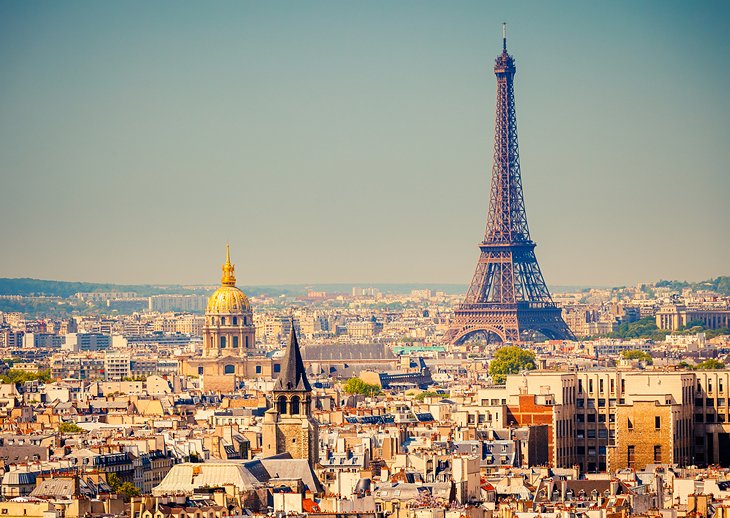
Known for its elegance and joie de vivre, Paris is a grand European capital city. The French have an expression that "there is only one Paris" ("il n'y a qu'un Paris") because this magnificent city is truly incomparable. Even the polished photos in tourist brochures do not do justice to the beauty of Paris. The city is filled with architectural masterpieces, like the famous Eiffel Tower and the majestic Notre-Dame Cathedral that reflect the city's rich heritage. The Louvre contains one of the finest art collections in the world. For French Impressionist art, the Musée d'Orsayand the Musée de l'Orangerie offer endless treasures. Other charms of Paris are its atmospheric medieval quarters: the Latin Quarter and Montmartre, and its graceful boulevards, like the Champs-Elysées, the most famous street in the world, and the Boulevard Saint-Germain-de-Prés, lined with legendary cafés.
To witness the glory of France's regal past, take an hour train ride from Paris to Versailles. The UNESCO-listed Château de Versailles is an opulent 17th-century palace that was built for Louis XIV (the "Sun King"). The château's splendid Baroque facade, dazzling Hall of Mirrors, and fountain-adorned formal gardens reveal the grandeur of France's bygone royal court.
Accommodation: Where to Stay in Paris
- Read More:
- 22 Top-Rated Tourist Attractions in Paris
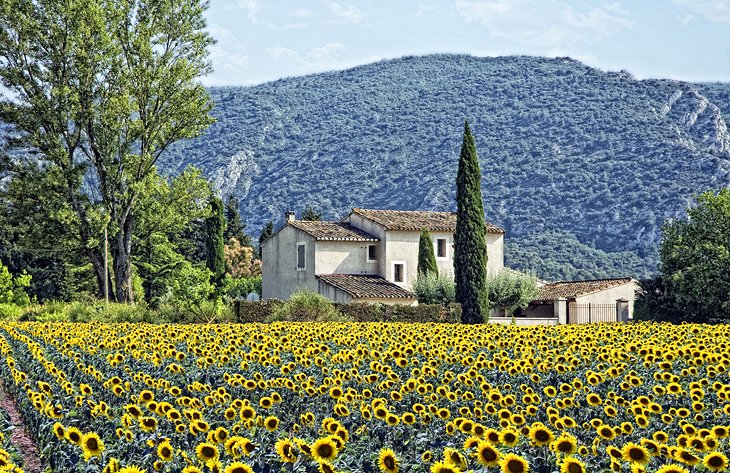
In contrast to the grey skies of Paris and northern France, Provence basks under the Mediterranean sun. This alluring countryside has a rugged and earthy appeal. The rolling hills are covered with a patchwork of small farms, olive groves, sunflowers, and lavender fields. The air is fragrant with the aroma of rosemary, sage, and thyme, herbs that grow in abundance and are used in the local cuisine. In this dreamy landscape, Impressionist painters found inspiration to create vibrant works of art. Today, tourists marvel at the unspoiled beauty and the historic intrigue of this region. Visitors are enchanted by the villages perchés, fortified medieval villages built on rocky outcrops and steep hilltops, including Saint-Paul-de-Vence; Eze, a perched village overlooking the coastline of the French Riviera; Gordes in the Luberon; Les Baux-de-Provence; and Tourette-sur-Loup. The larger towns also have their charm, found in the tree-shaded streets and outdoor cafés of Aix-en-Provence, traditional festivals in Arles, and the bustling seaport of Marseilles. Other must-see sites are the UNESCO-listed Palais de Papes in Avignon; the glamorous beach resort of Saint-Tropez, formerly a fishing village; and the ancient Roman theater in Orange in the Haut-Vaucluse area.
Accommodation: Where to Stay in Provence
- Read More:
- 25 Top Tourist Attractions in the Provence Region & Scenic Drives
3 The Côte d'Azur
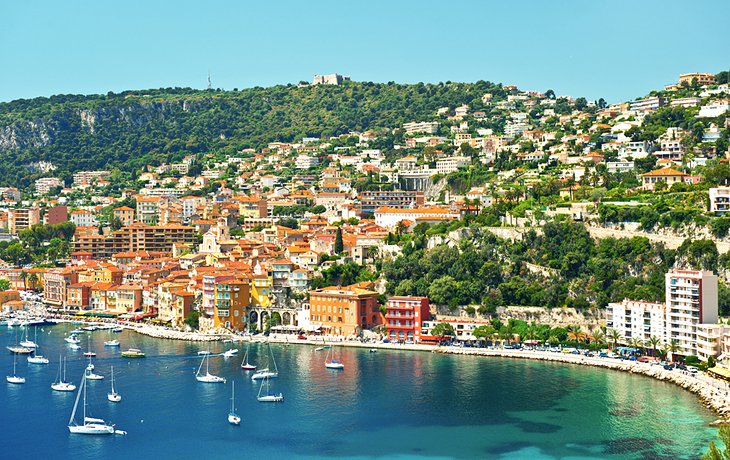
The French Riviera is a glamorous stretch of Mediterranean coastline known in France as the Côte d'Azur because of the mesmerizing azure-blue waters. The skies are often a bright blue as well, thanks to the sunny weather most of the year in this area of southern France. The Côte d'Azur begins at Saint-Tropez (overlapping with the Provence region) and extends all the way to Menton, less than 30 kilometers from the border with Italy. The Côte d'Azur became popular with the British as a wintertime resort in the 1820s. Nowadays, it's a bustling summer vacation destination and can feel overcrowded during the high season. Spring and autumn offer pleasant mild weather and a quieter, more relaxing atmosphere.
The Côte d'Azur has something for everyone. Nice is the place to enjoy life, visit art museums, and stroll along charming cobblestone streets and stunning seaside boulevards. Saint-Tropez, Cannes and Monaco are glitzy resort towns, playgrounds for the rich and famous that are dotted with lavish vacation villas, luxury hotels, gourmet restaurants, private beaches, and yacht-filled marinas. Many sunbathers and nature lovers prefer Antibes for its expansive sandy beaches and natural environment.
Accommodation: Where to Stay in Côte d'Azur
- Read More:
- 10 Top-Rated Tourist Attractions on the Côte d'Azur
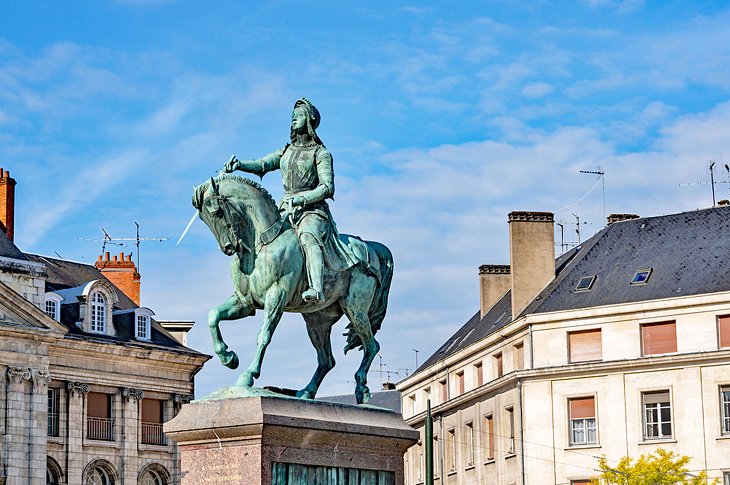
Normandy is a quaint pastoral region, covered with apple orchards and cow pastures and dotted with historic castles, inspiring churches, and picture-perfect towns. Rouen, Honfleur, and Bayeux charm visitors with lovely half-timbered houses and impressive cultural attractions. Normandy also boasts one of France's top tourist attractions, Mont-Saint-Michel. Known as the "The Heavenly Jerusalem," this 11th- to 13th-century Gothic abbey was a medieval pilgrimage site and is now listed as a UNESCO World Heritage Site. To the faithful, Mont-Saint-Michel is still an important pilgrimage site. For those seeking relaxation, Normandy's seaside resorts Deauville, Trouville, Dieppe, Étretat, and Fécamp are wonderful summertime destinations. The Côte de Nacre (the site of D-Day Landing Beaches) is fringed with spectacular sandy beaches and dramatic limestone cliffs along the Channel Coast.
Nature lovers will appreciate the "Suisse Normande" area, with its idyllic scenery and opportunities for outdoor sports. History buffs come to Normandy to visit the sites of the World War II Allied landings in 1944, including the D-Day Landing Beaches of Omaha Beach and Arromanches Beach and the Normandy Memorial Center in Caen. For those who appreciate Impressionist art, Monet's Gardens in Giverny is a wonderful day trip.
Accommodation: Where to Stay in Normandy
- Read More:
- 15 Top-Rated Tourist Attractions in Normandy
5 The Châteaux of the Loire Valley
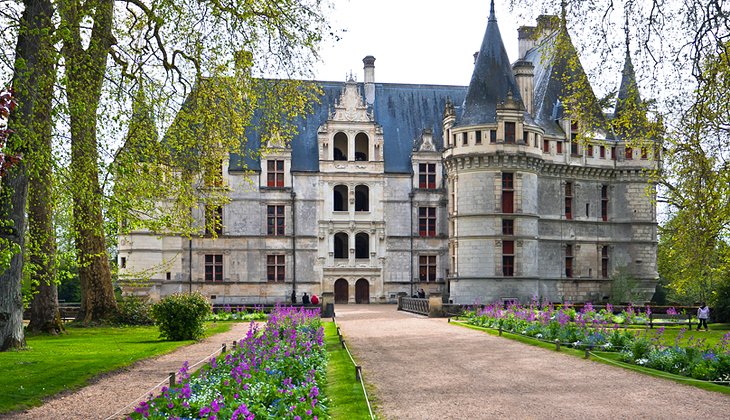
Like the scene of a fairy tale, the Loire Valley is a lush, wooded landscape dotted with magnificent castles along the gently flowing Loire River. Stretching for 280 kilometers, from Sully-sur-Loire to Chalonnes-sur-Loire in Anjou, the Loire Valley is the largest UNESCO-listed site in France. The region boasts an incredibly rich cultural heritage. During the 15th and 16th centuries, France's kings built sumptuous country retreats here purely for entertainment and enjoyment. Extravagant châteaux, such as the grandiose Château de Chambord and the emblematic Château de Chenonceau, offer insight into the opulence of the Renaissance-era French court. French nobles and elites also built stately manor houses, such as the Neoclassical Château of Cheverny and the Château d'Azay-le-Rideau in an idyllic setting complete with a water-filled moat. A marvelous outing for families with children is the the Parc des Mini-Châteaux in Amboise that is open from late March until early November. The park features more than 40 replicas of famous Loire châteaux built on a 1/25 scale. Children love exploring the kid-sized castles as well as having a chance to dress up as a knight or princess.
Other must-see destinations in the Loire Valley include three UNESCO-listed sites: the glorious Cathédrale Notre-Dame de Chartres, renowned for its marvelous 13th-century stained-glass windows; the Cathédrale Saint-Etienne in Bourges, considered a masterpiece of Gothic architecture; and Orléans, the Loire Valley's largest town and where Joan of Arc led her troops in 1429.
- Read More:
- 20 Top-Rated Tourist Attractions in the Loire Valley
6 Brittany: Quaint Fishing Villages, Ancient Ports, and Dramatic Coastal Scenery
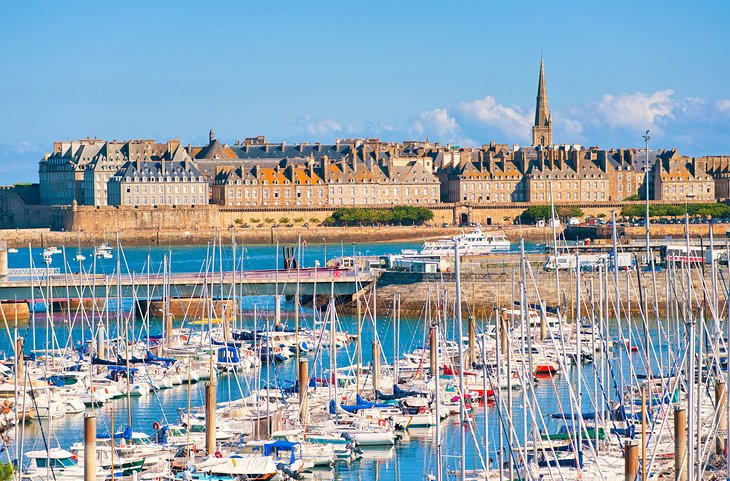
A picturesque coastal region steeped in tradition, Brittany owes its existence to the sea. Attesting to the region's maritime heritage are numerous historic port towns: Saint-Malo, surrounded by old ramparts; the medieval capital of Nantes; and the fortified 14th-century Concarneau. The seaside also boasts stylish beach resorts like Dinard on the Côte d'Emeraude and La Baule on the estuary of the Loire. The scenery in this area of northeastern France is dramatic and unspoiled, including secluded sandy beaches and a rocky coastline, where wild Atlantic waves crash against the shore. Quaint centuries-old fishing villages are nestled in quiet bays and on tiny wind-swept offshore islands. Visitors will be equally delighted to travel inland, where ancient towns are scattered across the farmlands and fairy tale castles are tucked away in pristine woodlands.
The Breton culture traces its influence back to the Celts (the local dialect is related to Gaelic) and similar to Ireland, it is a land of mythology and legends. Today, Brittany is strongly Catholic. Locals celebrate ancient religious customs called "pardons," special festivals when townspeople wear traditional costumes. The regional cuisine is equally unique, focused on seafood and savory buckwheat crepes.
Accommodation: Where to Stay in Brittany
- Read More:
- 14 Top-Rated Tourist Attractions in Brittany
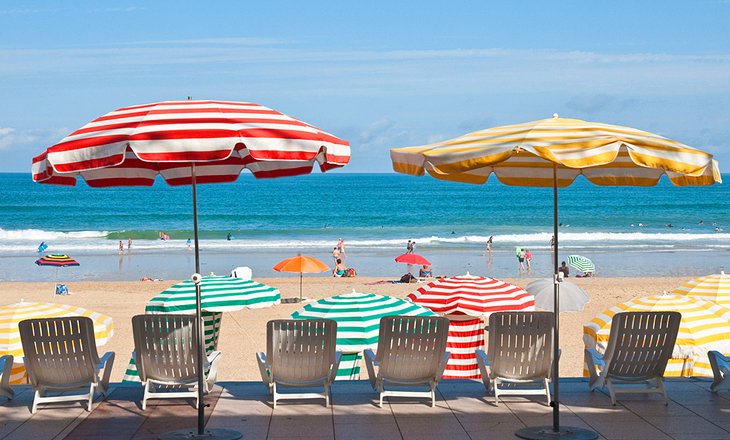
A perfect blend of Parisian-style elegance and natural beauty, Biarritz is an upscale seaside resort with gorgeous beaches. Known as the "Queen of Resorts and the Resort of Kings," Biarritz was favored by Empress Eugénie (wife of Napoleon III), who loved this area along the Bay of Biscay in the Basque region. She chose a sandy hillside overlooking the ocean as the location for her Imperial residence, the Villa Eugénie. The splendid Second Empire palace has been converted into luxury accommodations. The Hôtel du Palais has a Michelin-starred restaurant, where diners enjoy views of the Grand Plage, a beautiful sandy beach that has attracted sunbathers since the Belle Epoque. The Plage du Miramar is another stunning beach lined with colorful striped cabanas and parasols during summertime.
Just a half-hour drive (15 kilometers) from Biarritz is the historic fishing port of Saint-Jean-de-Luz, a popular summertime destination with family-friendly beaches. Traveling inland 25 kilometers from Biarritz is the traditional Basque village of Espelette. This small village boasts typical half-timbered, red-shuttered Basque houses that are decorated with rows of dried red peppers called Piment d'Espelette (prized for use in Basque cuisine). In Spain's Basque country, 50 kilometers by bus, car, or train from Biarritz, San Sebastian is a lively seaside city that delights visitors with its elegant architecture, sandy beaches, and gourmet tapas.
Accommodation: Where to Stay in Biarritz
- Read More:
- 14 Top-Rated Tourist Attractions in Biarritz
8 The Alsace Region
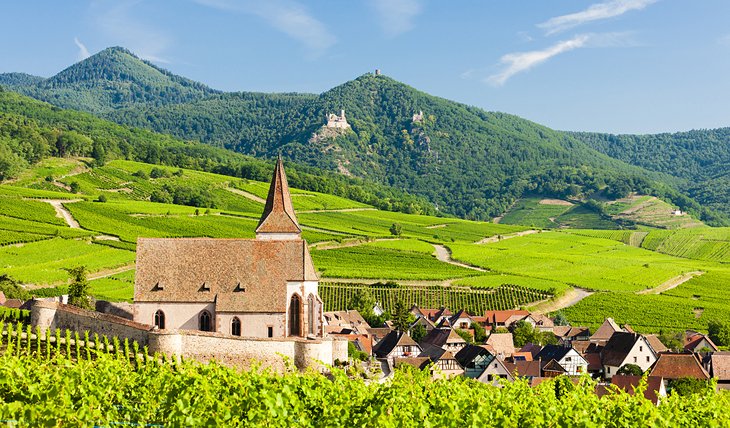
The historic cities of Strasbourg and Colmar, along with the hundreds of Alsatian villages, have a charming character that is completely distinct from the rest of France. The architecture and ambience of Alsace was influenced by neighboring Germany, as seen in the brightly-painted, half-timbered houses and venerable Gothic churches. Strasbourg enchants visitors with its narrow cobblestone streets, scenic canals, and ornate cathedral. Colmar is the quintessential Alsatian town, full of interesting old churches and traditional houses with flower-bedecked balconies.
Outside these two cities is an unspoiled landscape of vine-covered foothills. Nestled in the valleys and along the Rhine River are tiny storybook hamlets and picturesque villages. The Alsace Villages route is a popular tourist itinerary and is a delightful way to explore the region. Many of the villages, such as Riquewihr, Ribeauvillé, and Eguisheim are listed as the "Plus Beaux Villages de France" (Most Beautiful Villages of France) and many villages are designated "Villages Fleuris" (Flowering Villages) because of the vibrant potted flowers that adorn the homes and streets.
Accommodation: Where to Stay in Alsace
- Read More:
- 17 Top-Rated Alsace Villages and Medieval Towns
9 The French Alps
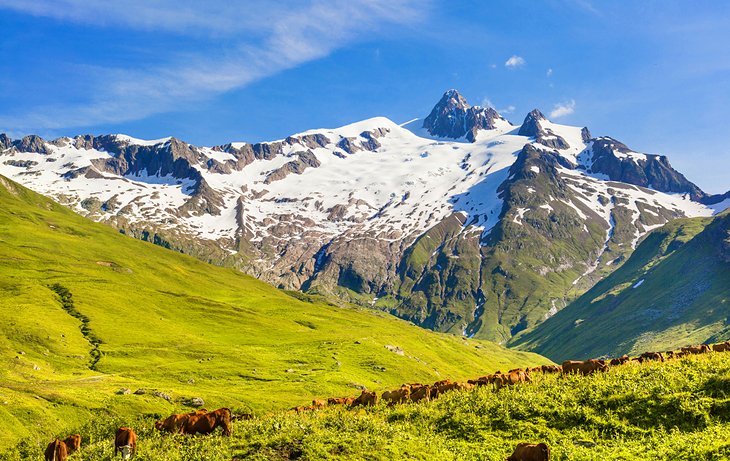
The French Alps boast some of the most awe-inspiring natural scenery in the world. The majestic Mont Blanc is the highest mountain in Europe, an iconic snowcapped peak that soars to 4,810 meters. At this altitude, the air is fresh and the landscape is sublime:
crystal-clear lakes, dramatic rushing waterfalls, peaceful valleys, and lush pine forests. During summertime, visitors flock to the Alps to go hiking, cycling, and mountain climbing. In the winter, the French Alps draws many tourists for alpine skiing, snowboarding, and cross-country skiing. Besides the spectacular mountain terrain, the region also has a rich cultural heritage linked to the ancestral territory of the Italian royal House of Savoy as well as the historic Dauphiné region. The lovely mountain village of Chamonix offers traditional alpine charm, while Annecy has an ancient château, lakeside scenery, and fairy tale ambience. Belle Epoque spa towns, such as Aix-les-Bains and Evian-les-Bain also delight visitors with pampering thermal spas.
Accommodation: Where to Stay in the French Alps
- Read More:
- 16 Top-Rated Tourist Attractions in the French Alps
10 Prehistoric Caves in the Dordogne and the Pyrenees
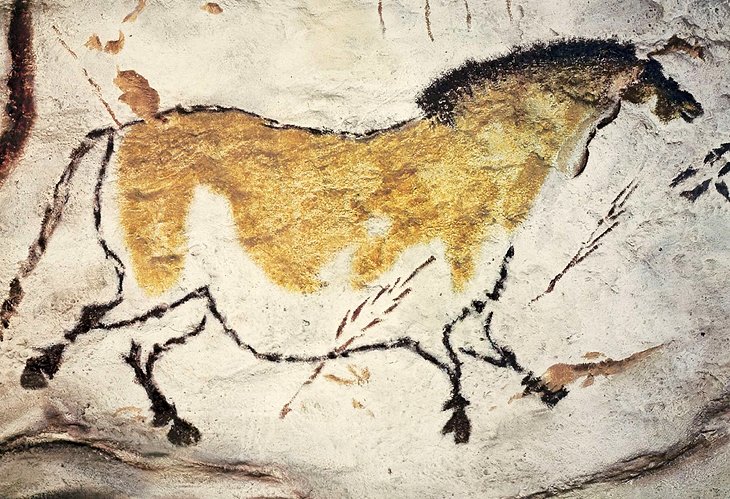
France's Dordogne region boasts incredible sites for viewing prehistoric cave art. To admire the masterpieces of prehistoric man, the UNESCO-listed Lascaux Cavein the Dordogne's Vallée de la Vézère is a must-see site. This cave contains beautifully rendered prehistoric paintings, among the finest examples of Paleolithic art in the world. Although the cave has been closed to the public to prevent damage, visitors may view a replica of the cave's exquisite animal paintings at the nearby Lascaux II site. Also in the Vézère Valley, the Grotte de Rouffignac is adorned with paintings of horses, cows, bison, deer, goats, and other animals, as well as noteworthy drawings of mammoths.
In the mountainous Pyrenees region is the Grotte du Mas d'Azil, an amazing cave decorated with intricate drawings. Visitors may view reproductions of the cave paintings along with prehistoric artifacts at the nearby Musée de la Préhistoire(Prehistory Museum). About 50 kilometers from the Mas d'Azil Cave is the Grotte de Niaux, with rock paintings from 14,000 to 10,000 BC. The Niaux Cave site is open to the public for guided visits made by advanced reservations. Around the town of Tarascon-sur-Ariège are several other prehistoric caves: the Grotte de Bédeilhac, the Grotte de Lombrives, and the Grotte de la Vache.
11 Rocamadour: A Medieval Pilgrimage Destination
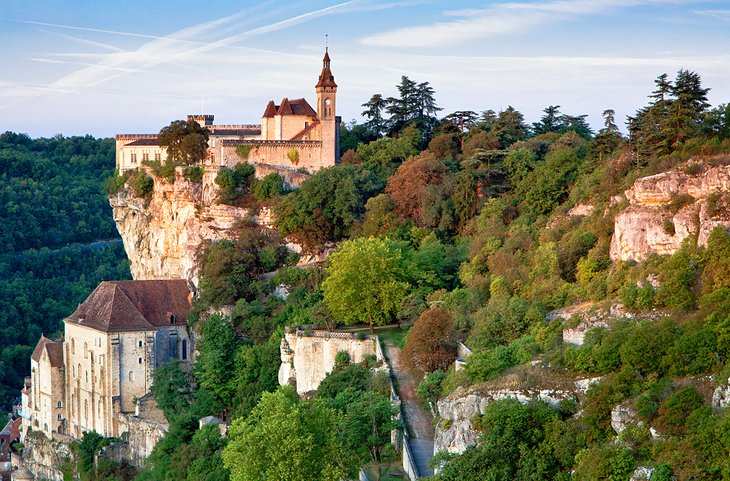
Perched on a sheer cliff in a natural park of the Dordogne region, Rocamadour seems to aspire towards heaven. This unforgettable site was the third most important Christian pilgrimage destination in the 11th century, after Jerusalem and Rome. An important stop on the Way of Saint James route to Santiago de la Compostela in Spain, the village of Rocamadour has seven medieval-era sanctuaries. The most famous is the Chapelle Notre-Dame (Chapelle Miraculeuse), which has the precious "Black Virgin" (Notre-Dame de Rocamadour), a figure of the Virgin Mary carved from walnut wood that naturally darkened over the centuries and is associated with miracles. The UNESCO-listed Basilique Saint-Sauveur, Rocamadour's largest church is an incredible historic monument.
Two other interesting tourist destinations are within an hour-and-a-half drive of Rocamadour: Limoges (145 kilometers away) is a "Ville d'Art et d'Histoire" ("City of Art and History") in the Limousin region and Périgueux (115 kilometers away), in the Dordogne region, is a historic town dating to the Roman era that was also on the Camino de Santiago.
Accommodation: Where to Stay in Rocamadour
12 Bordeaux and Saint-Émilion
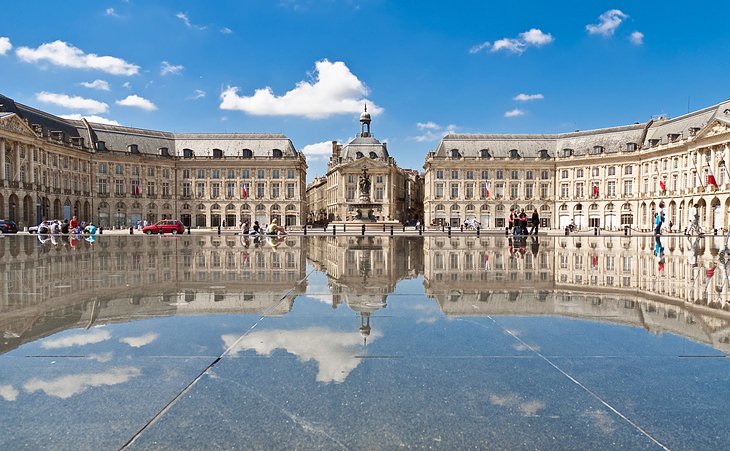
The Bordeaux region of France is a delightful countryside of rolling vine-covered hills, where grandiose castles preside over the landscape. The region also boasts two exceptional UNESCO World Heritage Sites: the elegant city of Bordeaux, with more than 350 buildings classified as historical monuments, and the pastoral village of Saint-Émilion, 51 kilometers from Bordeaux. Dating back to the Roman era, Saint-Émilion is filled with notable churches and monasteries because it was an important stop on the pilgrimage route to Santiago de Compostela during the Middle Ages.
Accommodation: Where to Stay in Bordeaux
- Read More:
- 14 Top Tourist Attractions in Bordeaux & Easy Day Trips
13 The Burgundy Region: Quintessential France
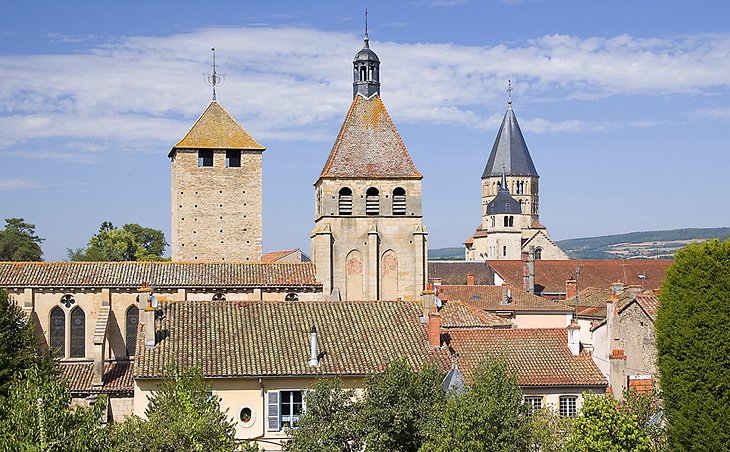
For a taste of quintessential France, visit the Burgundy countryside. This pastoral landscape of lush woodlands and rolling hills is dotted with impressive monuments. Romanesque churches, ancient towns, and inspiring old abbeys attest to a rich cultural heritage that dates back to the Middle Ages. Top attractions are the historic city of Dijon, with its aristocratic palaces, the medieval town of Beaune that delights with its old-world charm, and the monumental Abbey of Cluny - the largest church in Christendom until the 16th century when Saint Peter's Basilica was built in Rome. Besides its incredible history, Burgundy is equally renowned for its gastronomy, with a traditional cuisine that includes a repertoire of famous specialities such as escargot, Boeuf Bourguignon (Beef Burgundy), and Coq au Vin (chicken cooked in wine).
Accommodation: Where to Stay in Burgundy
- Read More:
- 17 Top-Rated Tourist Attractions in Burgundy
14 Cirque de Gavarnie in the Pyrenees Mountains
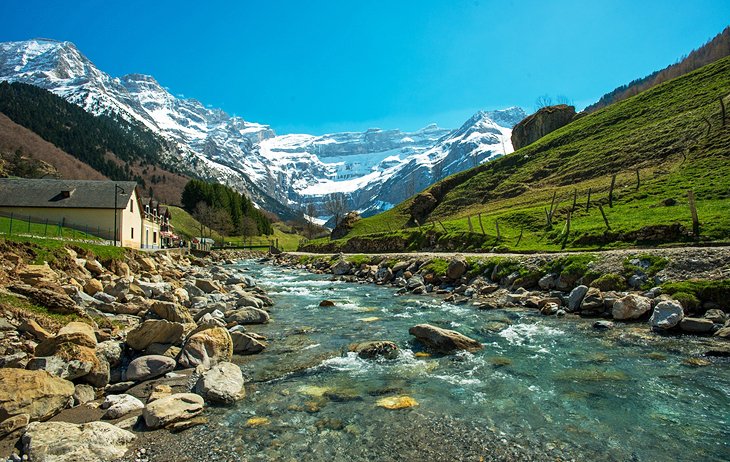
The mountainous Pyrenees region is an inspiring place that offers both natural splendor and spiritual wonders - with many sacred pilgrimage sites. The UNESCO-listed Cirque de Gavarnie is nature's version of a cathedral. Forming a semicircle, the awesome 3,000-meter-high granite rock walls are draped with dramatic waterfalls that lead down to rushing rivers and peaceful streams. The entire Hautes-Pyrénées region is part of a national park, the Parc National des Pyrénées that borders Spain. Within the park are hiking trails through lush forests and verdant valleys. During wintertime, the French Pyrenees is a popular destination for downhill skiing.
- Read More:
- Top-Rated Tourist Attractions in the French Pyrenees
15 Lourdes: France's Biggest Catholic Pilgrimage Site
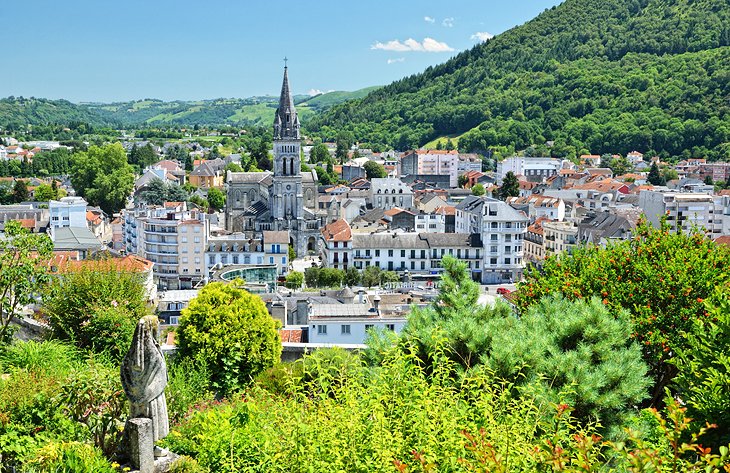
Nestled in the foothills of the Pyrenees Mountains, Lourdes is France's most important Catholic pilgrimage site. Millions of visitors come to Lourdes every year for spiritual inspiration. Some arrive to bathe in the waters in hopes of miracle cures. To the faithful, Lourdes is known for the 67 validated miracles that have occurred here. The main pilgrimage sites, the Grotto (where Saint Bernadette received her divine visions) and the Basilique du Rosaire are surrounded by a serene woodland along an idyllic babbling brook. During summertime, a Torchlight Marian Procession takes place every evening at 9pm concluding with a Mass at 11pm at the Grotto. The procession of hundreds of pilgrims holding candles is a breathtaking sight to behold.
Accommodation: Where to Stay in Lourdes
16 Lyon
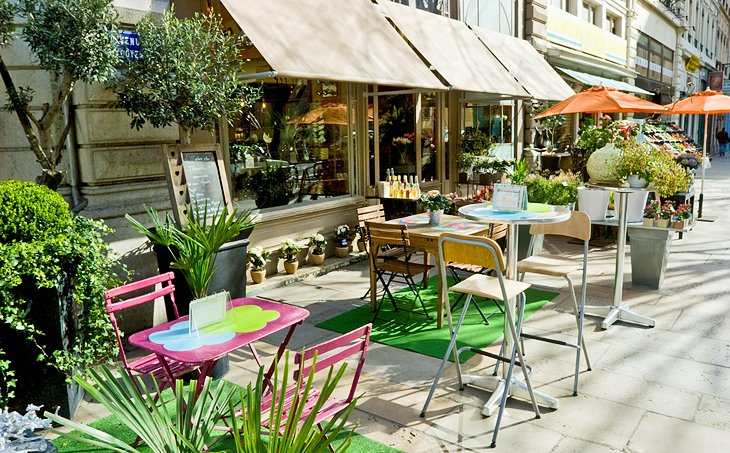
An enticing destination for gourmands to visit, Lyon is at the heart of French gastronomy. Lyonnais cuisine is famous for its delicious regional specialties, hearty meat dishes, sausages, and salads. A favorite dish is called "quenelles," fish dumplings served in a creamy sauce. To sample the local cooking, tourists can choose from an incredible selection of excellent restaurants and gourmet food shops. For foodies who want to truly indulge, Paul Bocuse's 3-star Michelin restaurant, the "Auberge du Pont de Collonges," is the place to go. For everyday dining, the "Bouchons Lyonnais" (traditional little brasseries) allow visitors to sample the authentic local cuisine while enjoying an inviting cozy ambience. Besides fine dining and epicurean delights, Lyon is rich in cultural heritage. The UNESCO-listed city boasts ancient ruins, atmospheric medieval quarters, and elegant Renaissance houses. Lyon's Musée des Beaux-Arts is second only to Paris' Louvre Museum in its wealth of artistic treasures.
Accommodation: Where to Stay in Lyon
- Read More:
- 15 Top-Rated Tourist Attractions in Lyon
17 Gascony Region & Toulouse in the South of France
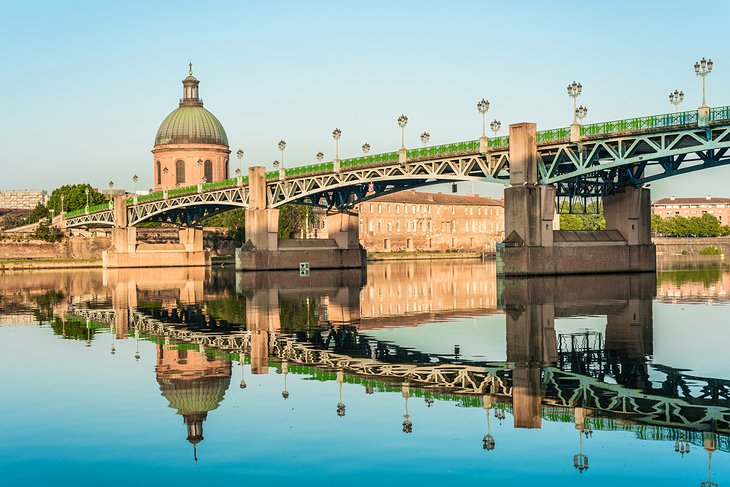
In the Midi-Pyrénées region, the rural area of Gascony and the city of Toulouse exude the sultry charm of southern France. Sunny and slow-paced, Gascony (Le Gers) is an unspoiled countryside with a traditional, earthy character. The rolling hills are blanketed with a patchwork of small farms and dotted with ancient villages and castles. Steeped in history dating back to the 13th century, Toulouse is known as "the Pink City" because of its distinctive red-brick architecture. These buildings reflect the sunlight in a rosy-toned hue. While ambling the pleasant town squares and basking on outdoor café terraces in Toulouse, visitors soak up the laid-back vibe of this beautiful and balmy city. The UNESCO-listed Canal du Midi runs through Toulouse and flows all the way to the Mediterranean port of Sète near Marseille. The tranquil, tree-shaded path along the canal is popular for leisurely strolls and cycling. A worthwhile detour from Toulouse (76 kilometers away) is the UNESCO World Heritage City of Albi in the Languedoc region.
Accommodation: Where to Stay in Toulouse
- Read More:
- Top-Rated Tourist Attractions in the French Pyrenees




























